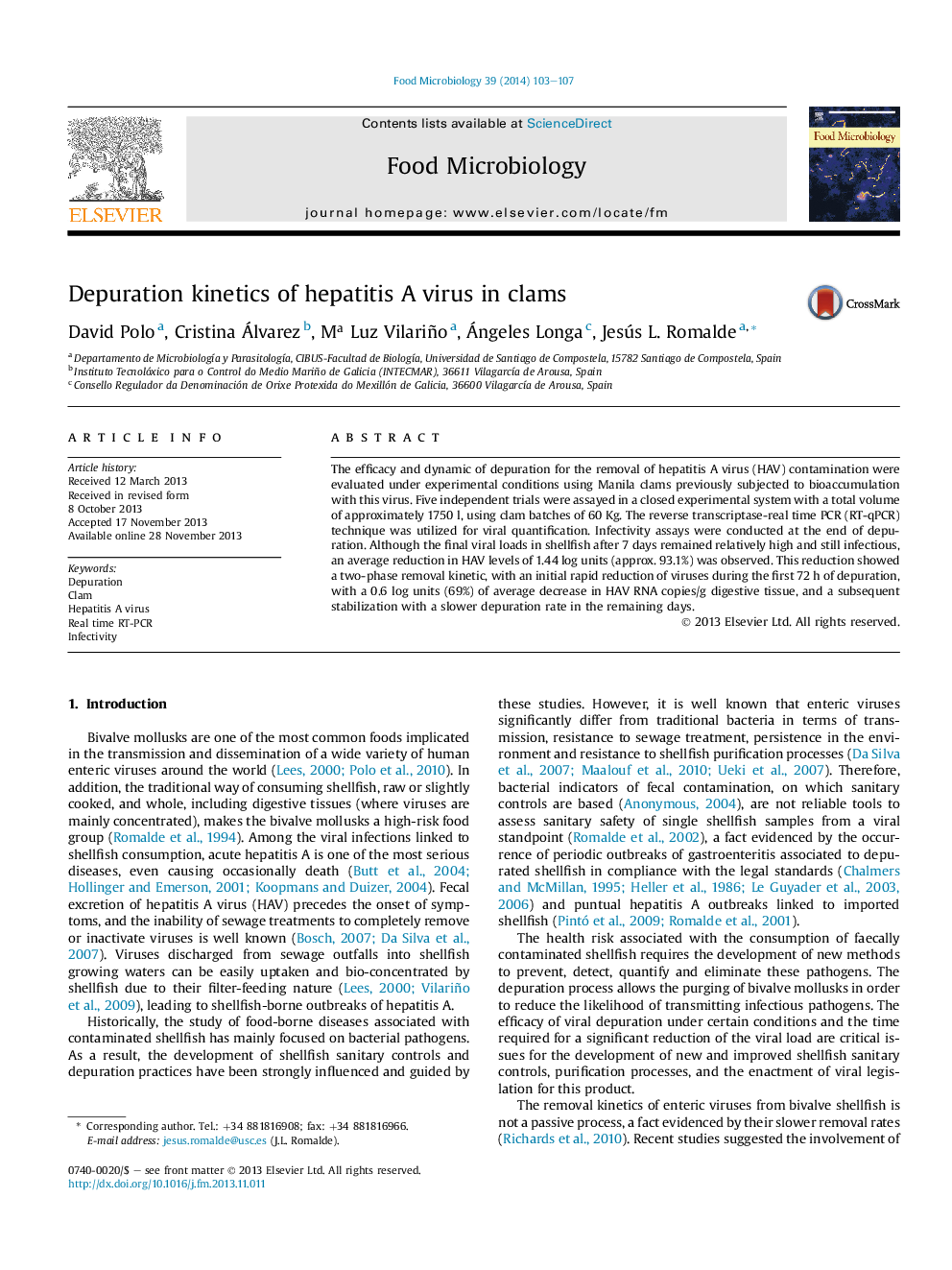| Article ID | Journal | Published Year | Pages | File Type |
|---|---|---|---|---|
| 6288740 | Food Microbiology | 2014 | 5 Pages |
Abstract
The efficacy and dynamic of depuration for the removal of hepatitis A virus (HAV) contamination were evaluated under experimental conditions using Manila clams previously subjected to bioaccumulation with this virus. Five independent trials were assayed in a closed experimental system with a total volume of approximately 1750Â l, using clam batches of 60Â Kg. The reverse transcriptase-real time PCR (RT-qPCR) technique was utilized for viral quantification. Infectivity assays were conducted at the end of depuration. Although the final viral loads in shellfish after 7 days remained relatively high and still infectious, an average reduction in HAV levels of 1.44 log units (approx. 93.1%) was observed. This reduction showed a two-phase removal kinetic, with an initial rapid reduction of viruses during the first 72Â h of depuration, with a 0.6 log units (69%) of average decrease in HAV RNA copies/g digestive tissue, and a subsequent stabilization with a slower depuration rate in the remaining days.
Related Topics
Life Sciences
Agricultural and Biological Sciences
Food Science
Authors
David Polo, Cristina Álvarez, Mª Luz Vilariño, Ángeles Longa, Jesús L. Romalde,
